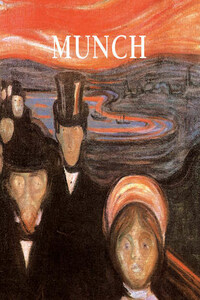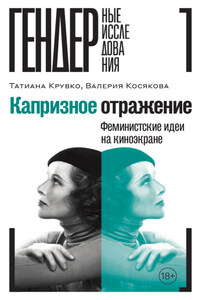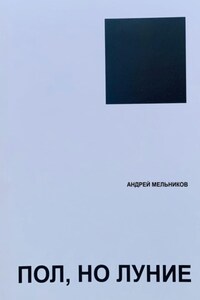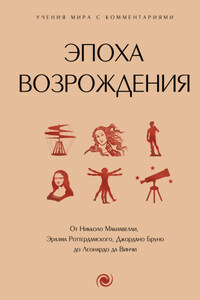Self-Portrait in the Green Bugatti, 1929
Oil on panel, 35 × 27 cm
Private Collection
Biography
1898
Born Tamara Gurwik-Gorska in Warsaw to wealthy, upper-class Polish parents. Her father, Bolris Gorski, was a lawyer with a French firm. Her mother was Malvina Decler.
1911
A trip to Italy with her grandmother helps Tamara discover her passion for art.
1914
Tamara moves in with her aunt Stephanie in St Petersburg, resenting her mother’s decision to remarry. She meets her future husband, Tadeusz Lempicki, a handsome lawyer from a wealthy Russian family.
1916
Tamara and Tadeusz marry in Petrograd in the chapel of the Knights of Malta.
1917
Russia is engulfed in revolution after the rise of the Bolsheviks and the new regime.
1918
Tadeusz is arrested as a counter-revolutionary. Tamara enlists the help of the Swedish consul to help him escape. They both manage to flee the country and are reunited in Paris, their home for the next 20 years.
1920
Birth of Kizette de Lempicka. Tamara takes classes with Maurice Denis and Andre Lhote. She takes the name Tamara de Lempicka and begins to develop her worldly, modish and erotic style.
1922
She sells her first paintings from the Gallerie Colette Weill, later exhibiting her work for the first time at the Salon d’Automne in Paris.
1925
De Lempicka makes a name for herself with a one woman show at the Bottega di Poesia in Milan and at the world’s first Art Deco exhibition, held in Paris. The German fashion magazine Die Dame commissions one of her most famous paintings, the Self-Portrait in the Green Bugatti.
1926
The great Italian poet and playwright, Gabriele d’Annunzio, makes a failed attempt to seduce de Lempicka at his villa on the Italian coastline.
1927
De Lempicka completes several controversial paintings of her daughter Kizette. She meets the beautiful Rafaela in the Bois de Boulogne who inspires some of her most sensuous and erotic works.
1928
She begins work on her Boucet family commissions and paints a portrait of her husband Tadeusz before their divorce later in the year. She meets Baron Raoul Kuffner and moves into a spacious apartment in rue Méchain designed by the fashionable modernist architect Robert Mallet-Stevens.
1929
De Lempicka becomes Kuffner’s mistress and makes her first trip to America.
1933
She marries Baron Kuffner. Her work and creativity suffer after the sobering realities of Hitler’s ascension to power in Germany and the Wall Street Crash. She enters a long period of depression.
1939
De Lempicka and Baron Kuffner move to America and settle in Los Angeles after Kuffner sells off most of his Austrian and Hungarian estates. De Lempicka continues to paint and slips easily into the glamorous world of Hollywood high society.
1942
Tired of their life in Hollywood, Kuffner insists they move back to New York. Kizette joins them in America where she meets her husband, Harold Foxhall, a geologist from Texas.
1943
Her new life as a New York socialite detracts from her art. Her figurative paintings and experiments with abstract expressionism fail to attract any interest. Her career begins to stall and she fades slowly into obscurity.
1962
Baron Kuffner dies. A distraught de Lempicka moves in with her daughter and husband in Houston.
1973
A renewed interest in her work leads to a hugely successful retrospective show of her work at the Galerie du Luxembourg.
1974
Her fame restored, she moves in with her daughter in Cuernavaca, Mexico, living the rest of her life marred by her irascibility in her dealings with her family and the rest of the world.
1980
Tamara de Lempicka dies on March 18>th leaving instructions for her ashes to be scattered over the crater of the volcano Popocatepetl.
* * *
Tamara de Lempicka created some of the most iconic images of the twentieth century. Her portraits and nudes of the years 1925–1933 grace the dust jackets of more books than the work of any other artist of her time. Publishers understand that in reproduction, these pictures have an extraordinary power to catch the eye and kindle the interest of the public. In recent years, the originals of the images have fetched record sums at Christie’s and Sotheby’s. Beyond the purchasing power of most museums, these paintings have been eagerly collected by film and pop stars. In May 2004, the Royal Academy of Arts in London staged a major show of de Lempicka’s work just one year after she had figured prominently in another big exhibition of Art Deco at the Victoria and Albert museum.
The Chinese Man
c. 1921
Oil on canvas, 35 × 27 cm
Musée des Beaux-Arts du Havre
The public flocked to the show despite a critical reaction of unprecedented hostility towards an artist of such established reputation and market value. In language of moral condemnation hardly used since Hitler’s denunciations of modern art at the Nuremberg rallies and the Nazi-sponsored exhibition of














